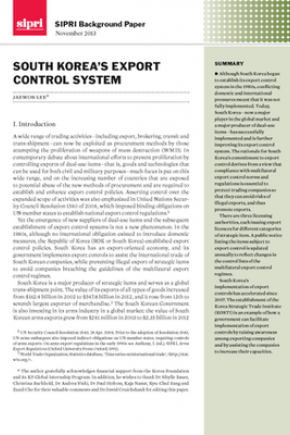South Korea's Export Control System
Although South Korea began to establish its export control system in the 1980s, conflicting domestic and international pressures meant that it was not fully implemented. Today, South Korea—now a major player in the global market and a major producer of dual-use items—has successfully implemented and is further improving its export control system. The rationale for South Korea’s commitment to export control derives from a view that compliance with multilateral export control norms and regulations is essential to protect trading companies so that they can avoid risks of illegal exports, and thus promote exports.
There are three licensing authorities, each issuing export licences for different categories of strategic item. A public notice listing the items subject to export control is updated annually to reflect changes in the control lists of the multilateral export control regimes.
South Korea’s implementation of export controls has accelerated since 2007. The establishment of the Korea Strategic Trade Institute (KOSTI) is an example of how a government can facilitate implementation of export controls by raising awareness among exporting companies and by assisting the companies to increase their capacities.
I. Introduction
II. The development of export controls in South Korea
III. Legal structure and control lists
IV. Licensing
V. Enforcement
VI. Conclusions

